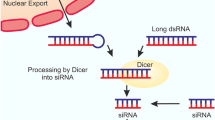Abstract
This paper presents the initial effort in anti-HIV infection using glycosphingolipid-based nanostructures. HIV infection of CD4 negative cells is initiated by the binding of the viral envelope glycoprotein gp120 to galactosylceramide (GalCer), a glycosphingolipid that serves as the cellular receptor for viral recognition. A series of nanostructures of GalCer are designed and produced using an AFM-based lithography method known as nanografting. The geometry dependence of recombinant gp120 binding to these nanostructures is monitored using high-resolution AFM imaging. Gp120 molecules are found to favor binding sites that allow for polyvalent interactions. Increased adsorption at the intersection of two lines, or between two parallel lines with matching separation for trimeric binding, strongly suggests that trivalent interactions are dominant in gp120-GalCer nanostructure interactions. Systematic distance-dependence studies, using parallel nanolines with various separations, reveal a separation of 4.8 nm, matching the separation of V3 loops in gp120 trimers. This investigation demonstrates that nanotechnology provides a powerful tool for investigating and guiding polyvalent interactions among biological systems.
Similar content being viewed by others
References
Yahi, N., Baghdiguian, S., Moreau, H., and Fantini, J. (1992), J. Virology 66, 4848–4854.
Harouse, J. M., Kunsch, C., Hartle, H. T., et al. (1989), J. Virology 63, 2527–2533.
Harouse, J. M., Bhat, S., Spitalnik, S. L., et al. (1991), Science 253, 320–323.
McAlarney, T., Apostolski, S., Lederman, S., and Latov, N. (1994), J. Neurosci. Res. 37, 453–460.
Brogi, A., Presentini, R., Solazzo, D., Piomboni, P., and Constantino-Ceccarini, E. (1996), Aids Res. Hum. Retroviruses 12, 483–489.
Brogi, A., Presentini, R., Piomboni, P., et al. (1995), J. Submicrosc. Cytol. Pathol. 27, 565–571.
Bhat, S., Spitalnik, S. L., Gonzalezscarano, F., and Silberberg, D. H. (1991), Proc. Natl. Acad. Sci. USA 88, 7131–7134.
Earl, P. L., Doms, R. W., and Moss, B. (1990), Proc. Natl. Acad. Sci. USA 87, 648–652.
Center, R. J., Leapman, R. D., Lebowitz, J., Arthur, L. O., Earl, P. L., and Moss, B. (2002), J. Virology 76, 7863–7867.
Wyatt, R., Kwong, P. D., Desjardins, E., et al. (1998), Nature 393, 705–711.
McReynolds, K. D., Hadd, M. J., and Gervay-Hague, J. (1999), Bioconjug. Chem. 10, 1021–1031.
Nolting, B., Yu, J. J., Liu, G. Y., Cho, S. J., Kauzlarich, S., and Gervay-Hague, J. (2003), Langmuir 19, 6465–6473.
Nuzzo, R. G. and Allara, D. L. (1983), J. Am. Chem. Soc. 105, 4481–4483.
Nuzzo, R. G., Fusco, F. A., and Allara, D. L. (1987), J. Am. Chem. Soc. 109, 2358–2368.
Hegner, M., Wagner, P., and Semenza, G. (1993), Surf. Sci. 291, 39–46.
Wagner, P., Hegner, M., Guntherodt, H. J., and Semenza, G. (1995), Langmuir 11, 3867–3875.
Chidsey, C. E. D., Loiacono, D. N., Sleator, T., and Nakahara, S. (1988), Surf. Sci. 200, 45–66.
Woll, C., Chiang, S., Wilson, R. J., and Lippel, P. H. (1989), Phys. Rev. B 39, 7988–7991.
Lang, C. A., Dovek, M. M., Nogami, J., and Quate, C. F. (1989), Surf. Sci. 224, L947-L955.
Poirier, G. E. and Pylant, E. D. (1996), Science 272, 1145–1148.
Poirier, G. E. (1997), Chem. Rev. 97, 1117–1127.
Qian, Y. L., Yang, G. H., Yu, J. J., Jung, T. A., and Liu, G. Y. (2003), Langmuir 19, 6056–6065.
Xu, S. and Liu, G. Y. (1997), Langmuir 13, 127–129.
Xu, S. and Liu, G. Y. (1999), Scanning 21, 71–71.
Xu, S., Miller, S., Laibinis, P. E., and Liu, G. Y. (1999), Langmuir 15, 7244–7251.
Liu, G. Y., Xu, S., and Qian, Y. L. (2000), Acc. Chem. Res. 33, 457–466.
Amro, N. A., Xu, S., and Liu, G. Y. (2000), Langmuir 16, 3006–3009.
Kwong, P. D., Wyatt, R., Robinson, J., Sweet, R. W., Sodroski, J., and Hendrickson, W. A. (1998), Nature 393, 648–659.
Starcich, B. R., Hahn, B. H., Shaw, G. M., et al. (1986), Cell 45, 637–648.
Leonard, C. K., Spellman, M. W., Riddle, L., Harris, R. J., Thomas, J. N., and Gregory, T. J. (1990), J. Biol. Chem. 265, 10,373–10,382.
Cook, D. G., Fantini, J., Spitalnik, S. L., and Gonzalezscarano, F. (1994), Virology 201, 206–214.
Fantini, J., Hammache, D., Delezay, O., et al. (1997), J. Biol. Chem. 272, 7245–7252.
Gelderblom, H. R., Hausmann, E. H. S., Ozel, M., Pauli, G., and Koch, M. A. (1987), Virology 156, 171–176.
Ozel, M., Pauli, G., and Gelderblom, H. R. (1988), Arch. Virology 100, 255–266.
Nermut, M. V., Grief, C., Hashmi, S., and Hockley, D. J. (1993), Aids Res. Hum. Retroviruses 9, 929–938.
Kuznetsov, Y. G., Victoria, J. G., Robinson, W. E., and McPherson, A. (2003), J. Virology 77, 11,896–11,909.
Allen, M. J., Hud, N. V., Balooch, M., Tench, R. J., Siekhaus, W. J., and Balhorn, R. (1992), Ultramicroscopy 42, 1095–1100.
Markiewicz, P. and Goh, M. C. (1995), J. Vacuum Sci. Tech. B 13, 1115–1118.
Xu, S., Amro, N. A., and Liu, G. Y. (2001), Appl. Surf. Sci. 175, 649–655.
Wadu-Mesthrige, K., Amro, N. A., Garno, J. C., Xu, S., and Liu, G. Y. (2001), Biophysi. J. 80, 1891–1899.
Author information
Authors and Affiliations
Corresponding author
Rights and permissions
About this article
Cite this article
Yu, JJ., Nolting, B., Tan, Y.H. et al. Polyvalent interactions of HIV-gp120 protein and nanostructures of carbohydrate ligands. Nanobiotechnol 1, 201–210 (2005). https://doi.org/10.1385/NBT:1:2:201
Issue Date:
DOI: https://doi.org/10.1385/NBT:1:2:201




